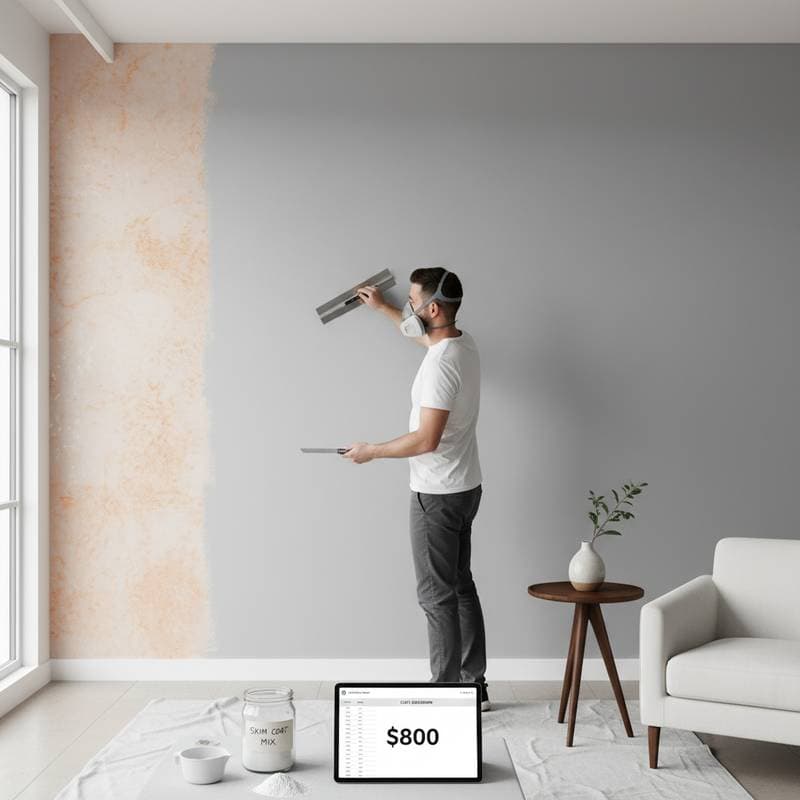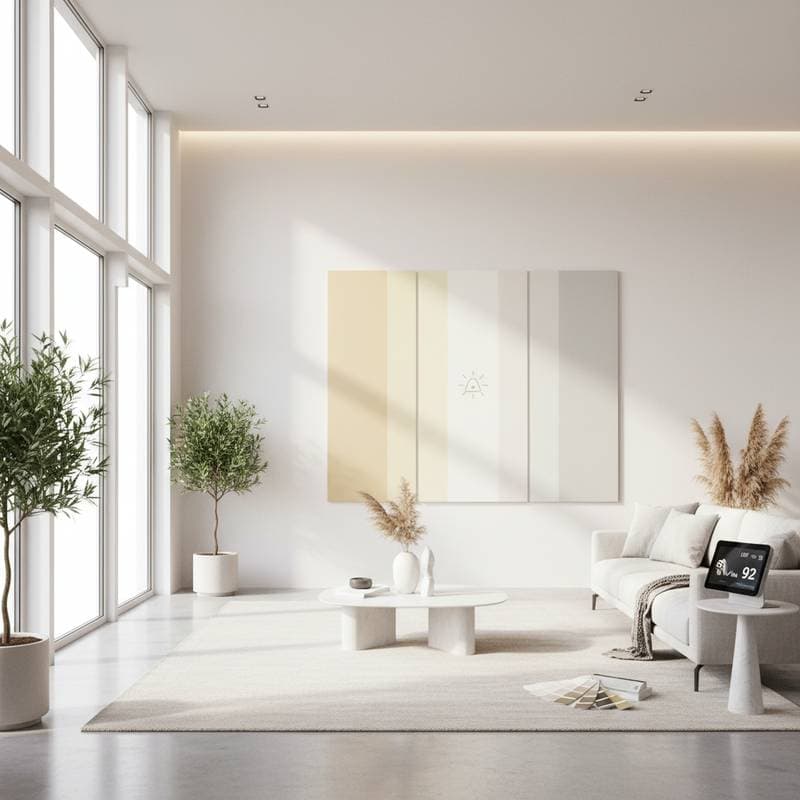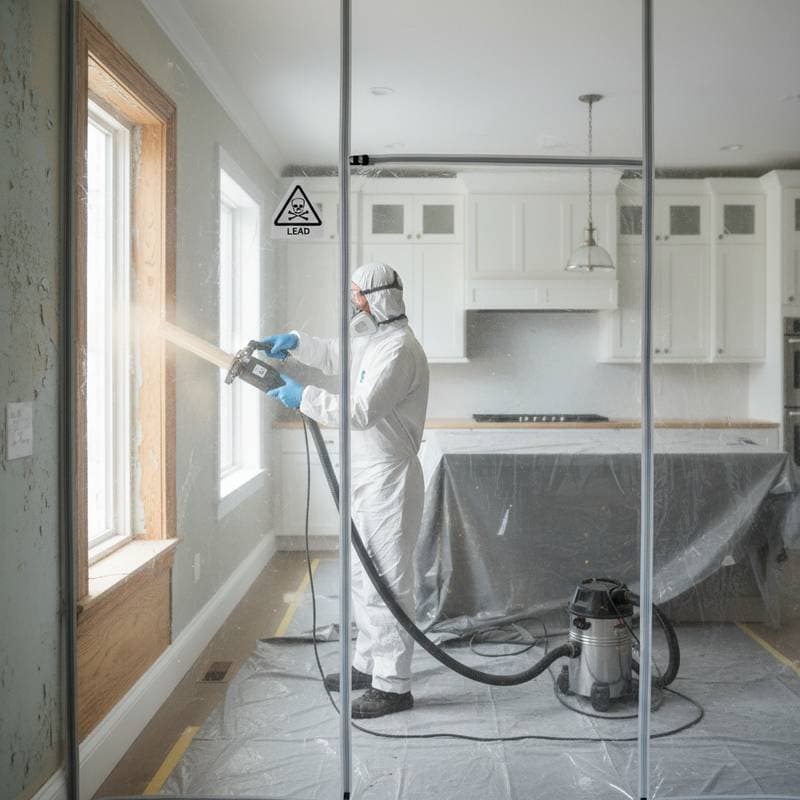Why 60% Skip Sanding Between Coats and Regret It Later
Many homeowners apply new coats of paint expecting a flawless, smooth finish, but they end up disappointed when the surface looks uneven or rough. The missing step in most cases is proper sanding between coats. Surveys indicate that more than half of DIY painters skip this step, assuming it saves time. In reality, it often leads to frustration, wasted materials, and an unsatisfactory result that eventually costs more to fix. Understanding why sanding between coats matters, what it costs, and how to do it correctly can save both time and money while ensuring a professional-quality finish.
Why Sanding Between Coats Matters
Sanding between coats does not involve removing all the paint just applied. Instead, it smooths out inconsistencies, removes dust nibs, and creates a surface that allows the next coat to bond properly. Paint layers form better adhesion when the surface has a slight texture that the new paint can grip. Without sanding, the next coat may sit on top rather than integrate with the previous one. This can lead to peeling, bubbling, or a dull finish.
Even the highest-quality paints can develop imperfections as they dry. Dust, fibers, or tiny air bubbles can settle into wet paint. A light sanding removes these flaws, leaving a uniform surface that enhances color depth and sheen. Skipping this step can make even premium paint look uneven.
Cost Overview for Proper Surface Preparation
Sanding between coats adds a small percentage to the overall project cost, but the improvement in quality proves substantial. Most homeowners spend between $1.50 and $3.50 per square foot for complete interior painting, including preparation. Of that, sanding typically accounts for $0.25 to $0.75 per square foot, depending on the surface type and finish quality desired. For a 150-square-foot room, proper sanding between coats might add $40 to $100 to total costs.
Average Cost Ranges by Project Size
- Small room (100 sq. ft.): $150 - $350 total, with $25 - $50 for sanding
- Medium room (200 sq. ft.): $300 - $700 total, with $50 - $100 for sanding
- Large room (400 sq. ft.): $600 - $1,400 total, with $100 - $200 for sanding
Cost Breakdown per Square Foot
- Materials: $0.75 - $1.50 per sq. ft.
- Labor: $0.50 - $1.25 per sq. ft.
- Preparation (including sanding): $0.25 - $0.75 per sq. ft.
- Additional factors (repairs, primer, cleanup): $0.10 - $0.50 per sq. ft.
Skipping this stage often leads to premature repainting or corrective work, which can double the total cost later.
Factors Affecting Sanding Costs and Results
Several variables influence both the cost and quality of sanding between coats. Understanding these helps homeowners budget accurately and achieve consistent, durable results.
1. Surface Material
Different materials respond differently to sanding. Drywall and wood require distinct grit levels and techniques. Drywall typically needs fine sandpaper in the 180 to 220 grit range, while wood may require progressive sanding from coarse to fine grits. Harder materials need more labor time, increasing costs slightly.
2. Paint Type and Finish
Gloss and semi-gloss finishes require more thorough sanding to create adhesion, while matte paints prove more forgiving. Oil-based paints usually need longer drying periods between sanding sessions, which can add to labor time and project duration.
3. Number of Coats Applied
Each additional coat multiplies the sanding requirements. A two-coat system might involve one intermediate sanding, while a three-coat finish involves two. More coats equal more labor and materials, but the payoff is a richer and more resilient finish.
4. Condition of Existing Surface
Rough or previously painted walls often need extra sanding before and between coats. If the old paint is flaking or glossy, it must be scuffed thoroughly to ensure adhesion. The more extensive the initial preparation, the higher the cost, but skipping it often leads to peeling paint within months.
5. Labor Rates and Regional Factors
Local labor costs vary by region. Urban areas with higher living expenses typically have higher hourly rates, while rural areas may be more affordable. Seasonal demand also affects pricing, as painters are busiest during mild weather.
Detailed Cost Analysis by Quality Level
| Finish Quality | Basic Range | Standard Range | Premium Range | Key Differences |
|---|---|---|---|---|
| Surface Prep and Sanding | $0.20 - $0.40 | $0.40 - $0.60 | $0.60 - $0.75 | Time spent, grit sequence, and dust control methods |
| Paint Application | $0.80 - $1.20 | $1.20 - $1.75 | $1.75 - $2.25 | Paint quality, number of coats, precision of technique |
| Cleanup and Inspection | $0.10 - $0.25 | $0.25 - $0.40 | $0.40 - $0.50 | Detailing, touch-ups, and final quality check |
Premium finishes often include dust-free sanding systems and meticulous inspection between coats, resulting in a visibly smoother appearance and longer-lasting paint integrity.
The Risks of Skipping Sanding Between Coats
Skipping sanding may seem harmless at first, but it often leads to visible flaws once the paint cures. Common issues include uneven sheen, where glossy and dull spots appear across the surface. Poor adhesion causes paint to peel or chip easily, especially in humid areas. Visible brush strokes or roller texture accentuate the unevenness of each layer.
Reduced durability means the paint fails sooner, requiring another repaint much earlier than expected. Repairing these problems often involves stripping or heavy sanding of the entire surface, which costs several times more than preventive sanding during the original project.
Value and Return on Investment
Proper sanding increases both visual appeal and durability, extending the lifespan of your paint job. A well-prepared surface can last five to ten years longer than one applied over poor preparation. For homeowners planning to sell, smooth finishes add perceived value, making rooms appear cleaner and more professionally maintained. Investing an extra $75 to $150 in sanding can preserve thousands of dollars in property value over time.
Money-Saving Strategies
Homeowners can reduce sanding-related costs without compromising quality by following a few smart practices.
- Do light prep work yourself. Removing dust, nails, and loose debris before professionals arrive saves labor time.
- Use sanding poles or vacuum-assisted sanders. These tools improve efficiency and minimize cleanup costs.
- Schedule during off-peak seasons. Painters often offer lower rates when demand is lower.
- Choose quality mid-range materials. Premium paint combined with proper sanding provides better results than high-end paint over poor preparation.
- Request a detailed quote. Ensure sanding between coats is included in the estimate to avoid hidden costs.
Planning Your Budget
When budgeting for painting projects that include sanding between coats, start by measuring total square footage. Multiply this by your local average rate per square foot to estimate a base cost. Add 10 to 15 percent as a contingency for extra sanding or repair needs. Discuss preparation steps with your contractor in detail to ensure expectations align.
If tackling the project yourself, factor in equipment purchases like sanding blocks, vacuum attachments, and respirators. These tools typically cost $50 to $150 upfront but can be reused for future projects.
DIY vs Professional Sanding
DIY sanding can save money but requires patience and proper technique. A professional painter uses consistent pressure, correct grit sequences, and dust control systems that produce a superior finish. Inexperienced sanding can gouge surfaces or leave swirl marks that are visible after painting. Hiring professionals typically costs more initially, but the results last longer and often require fewer touch-ups. The total cost difference between DIY and professional work for a medium room might range from $150 to $300, but the professional result can extend the paint's lifespan by several years.
Getting Started with Your Project
Before beginning your next painting project, include sanding between coats in your preparation checklist. Allocate time for drying, sanding, and cleanup between each coat. Use fine-grit sandpaper for intermediate sanding and always remove dust before applying the next layer. Focus on corners, edges, and trim where uneven buildup occurs most often. Whether you hire professionals or take the DIY route, consistent sanding ensures the finish looks polished and lasts longer.
Frequently Asked Questions
1. What is the average cost for sanding between coats during interior painting?
Most homeowners spend between $0.25 and $0.75 per square foot for sanding between coats, depending on surface type and finish quality. For an average-sized room, expect $40 to $100 dedicated to sanding within the total painting budget.
2. What factors have the biggest impact on sanding costs?
The main factors include surface material, paint type, number of coats, and existing wall condition. Glossy finishes and rough surfaces require more labor, increasing total costs slightly.
3. How can I save money on my painting project without sacrificing quality?
Prepare walls beforehand, remove debris, and schedule painting during slower seasons. Choose reliable mid-range paints and confirm that sanding between coats is included in your estimate.
4. Should I hire professionals or attempt sanding as a DIY project?
DIY sanding can work for small rooms if you have the right tools and patience. For large or high-visibility areas, professionals deliver smoother and more consistent results that last longer.
5. How do I budget for unexpected costs in painting projects?
Add a 10 to 15 percent contingency to your base estimate for unforeseen repairs or extra preparation. Discuss any potential wall damage or texture issues with your contractor before work begins.
6. When is the best time to start a painting project for the lowest costs?
Mild weather periods often bring lower prices and better paint performance. Contractors are less busy, which can lead to more flexible scheduling and potential discounts.



